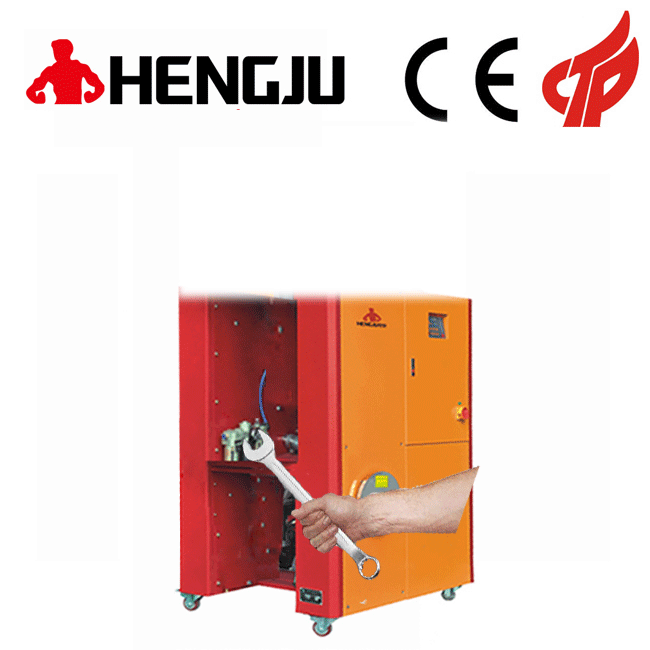Low temperature regeneration drying and dehumidification system for low dew point drying chamber
Technology>Latest Patent>Heating; Stove; Ventilation; Drying Equipment Manufacturing and Application Technology
Manufacturing method of low-temperature regeneration drying and dehumidifying system for low dew point drying chamber
SUMMARY OF THE INVENTION The present invention provides a dehumidification device using a heat pump, which can supply low dew point air even if the regeneration temperature is as low as 50 degrees. The present invention has a first dehumidification flow path and a second dehumidification flow path. After the external air is cooled and dehumidified by the first cooler, it passes through the adsorption area of the first dehumidification flow path, so that it passes through the adsorption of the first dehumidification flow path. The air in this area passes through the adsorption area of the second cooler and the second dehumidification rotor, and is supplied to the drying chamber as supply air; the air returning from the drying chamber is mixed with the air that has passed through the adsorption area of the first dehumidification rotor, and A part of the air that has passed through the adsorption area of the second dehumidification flow path is divided by the second heater to pass through the regeneration zone of the second dehumidification flow path. The air is heated by the third heater and passes through the regeneration zone of the first dehumidifying rotor.
【Patent Description】
Low temperature regeneration drying and dehumidification system for low dew point drying chamber
Technical field
[0001] The present invention relates to a dry dehumidification device, which uses a dehumidification rotor and a heat pump, and can supply air with a low dew point even if the regeneration temperature is low.
【Background technique】
[0002] Recently, as the demand for lithium batteries has increased, their production has continued to expand. For lithium batteries, lithium used as a raw material reacts with moisture in the air, and due to this reaction, the performance of the manufactured lithium battery is deteriorated. Therefore, lithium battery production lines need to be kept dry. As a method of maintaining a dry state, there are: a method of purging production equipment with dry nitrogen; and a method of drying production equipment. A method of a dehumidification device using a dehumidification rotor, wherein the dehumidification rotor has hygroscopicity such as silica gel.
[0003] As lithium batteries are widely used in electric vehicles, hybrid vehicles and other vehicles, the scale of production plants has become larger and larger, and the method of using dehumidifiers has gradually replaced the above-mentioned method of purifying with nitrogen.
[0004] In the case of the dehumidification device, high temperature air is used when regenerating the dehumidification rotor, but the energy used to generate the high temperature air should be reduced as much as possible.
[0005] For example, according to what is disclosed in Patent Document 1, the return air from the drying chamber to which the dry air is sent returns between the first dehumidification rotor and the second dehumidification rotor, and is dehumidified from the second dehumidification rotor. After heating a part of the air flowing out of the runner, it is supplied to the regeneration area of the first dehumidification runner and the second dehumidification runner. Therefore, it can be measured at a relatively low temperature of 80 degrees Celsius (hereinafter, the temperature is represented by "degree Celsius"), and the dehumidifying rotor is regenerated, which has a higher energy saving effect.
[0006] In addition, Patent Document 2 discloses a desiccant air conditioner that uses a three-stage dehumidification rotor with a regeneration temperature of 80 degrees or less to provide dry air with an ultra-low dew point temperature. The combination of evaporator and condenser with cooler and regenerator can improve energy saving effect.
[0011] According to the technique disclosed in the aforementioned Patent Document 1, a part of the air supplied to a low humidity space such as a drying chamber is used for regeneration of the dehumidifying rotor. Therefore, even if the regeneration temperature is low, air with a low dew point can be supplied. So as to achieve the effect of energy saving. That is, in factories, there are many processes for heating specific parts, and the residual heat after heating is discarded in a state of exhausting warm water, steam, or hot air. By using waste heat, energy saving effects can be obtained. However, if there is no waste heat source (such as hot water, steam, exhaust gas, etc.) that can be used for low-temperature regeneration, additional energy will be generated.
|
 +8613669807274
+8613669807274
 +8613669807274
+8613669807274 wto-btb@wto-btb.com
wto-btb@wto-btb.com Tel: +8613669807274
Tel: +8613669807274 SMS: +8613669807274
SMS: +8613669807274